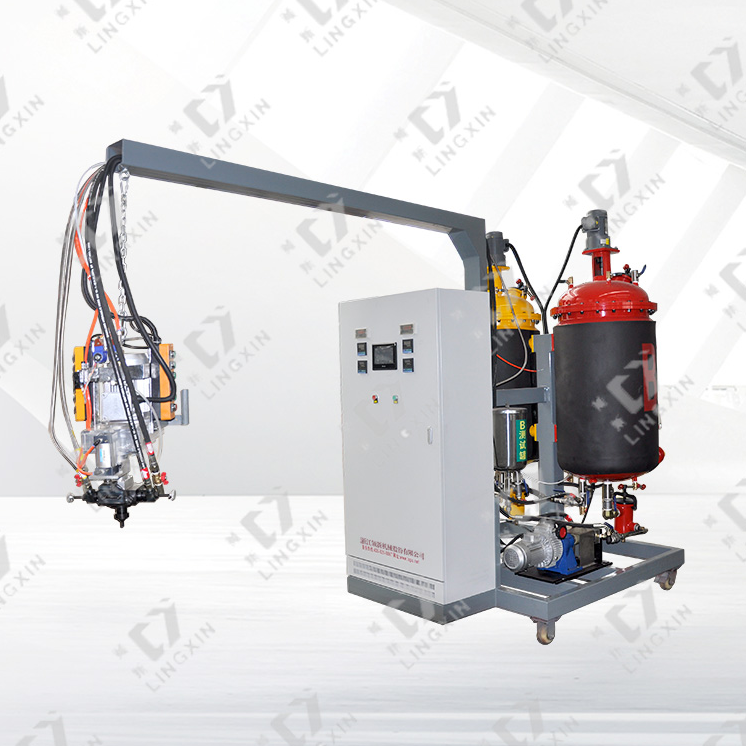Industry newsCurrent Pocation:home > Industry news
What is polyurethane elastomer? What are the main raw materials?
Overview of polyurethane elastomers
Alleged elastomer is to point to vitrification temperature is below room temperature, pull break elongation rate > 50%, the polymer material with better restorability after external force is removed, and vitrification temperature is higher than room temperature polymer material calls plastic. 聚氨酯弹性体设备,In elastomer, its elongation at break is larger (> 200%), 100% constant elongation stress is smaller (such as < 30Mpa), good elasticity can be called rubber. Therefore, elastomer is a kind of polymer material more widely used than rubber.

Polyurethane elastomer, also known as polyurethane rubber, is a special category of elastomers, with a wide range of raw materials and formulations. The range of hardness of polyurethane elastomers is very wide, ranging from low modulus rubber under sauer A10 to high impact resistant rubber elastomers under sauer D85. Therefore, polyurethane elastomer has a wide range of properties, which is a kind of polymer material from rubber to plastics.
Polyurethane elastomers are the main raw materials
There are three main types of materials used in polyurethane elastomers: polyurethane elastomer equipment, i.e. oligomer polyols, polyisocyanates and chain extenders (crosslinking agents). In addition, sometimes in order to improve the reaction speed, processing properties and product properties, also need to add some compounds. Only the raw materials used for polyurethane saddles are described below.
Reaction process: polyol reacted with diisocyanate to make prepolymer with low molecular weight. High molecular weight polymer was formed by chain extension reaction. The appropriate crosslinking agent was then added to form the polyurethane elastomer. The process flow is as follows:
Key points of operation in polyurethane elastomer processing
temperature control
When the prepolymer is synthesized, the temperature is controlled between 75-82℃. If the polyurethane elastomer device is high, the performance of the synthesized prepolymer will decline, and if it is low, the polymerization time will be prolonged. When mixed with MOCA, the prepolymer temperature is controlled between 90-110℃. If it is high, the hardness and strength of the product will be reduced, while if it is low, the viscosity of the polymer will be increased, which is not conducive to pouring operation. For polyurethane elastomer equipment, curing time is controlled at 130℃. If it is too high, MOCA will decompose, which is not conducive to crosslinking reaction, and other side reactions will be increased. Lower will extend the molding time. The melting temperature of MOCA can be controlled as soon as it is melted into a liquid, and no further heating is allowed. Otherwise, the color of liquid MOCA will become darker and decompose, which will affect the properties of products.
time control
Synthesis reaction 2h, intermittent vacuum for 2h can be. The prepolymer synthesis should not exceed 4h at 75 ° c, still less 2h at 100 ° c at high temperature, otherwise the performance of the product will be reduced. Casting should be completed within 1-2min, because the stabilization period after mixing the prepolymer and MOCA is very short, generally only 4-5min, otherwise the mixture will not be solidified for pouring. Mold press vulcanization time according to the shape and size of the product, generally between 15 and 30 minutes, to ensure that products molding. When encountering large products, the time will be longer and it will take 2-3h.
Degassing of prepolymer
Degassing is the key to the success of casting polyurethane elastomers. Generally, two links need to be controlled. After the prepolymer is synthesized, it will be degassed in vacuum at 75℃ when standing still. Most of the gas in the prepolymer will be removed. Before mixing with MOCA, the prepolymer should be heated to 100-110℃ and degassed at high temperature. At the same time, vacuum (-0.095mpa) was taken out and stirred to turn the bottom bubble to the top, and then vacuum was taken and degassed for 10min to discharge the gas in the prepolymer before mixing the product with vulcanizing agent.